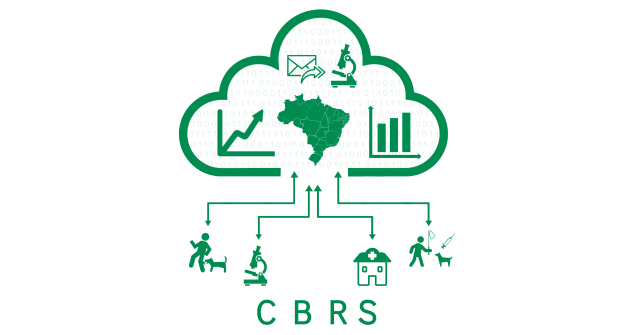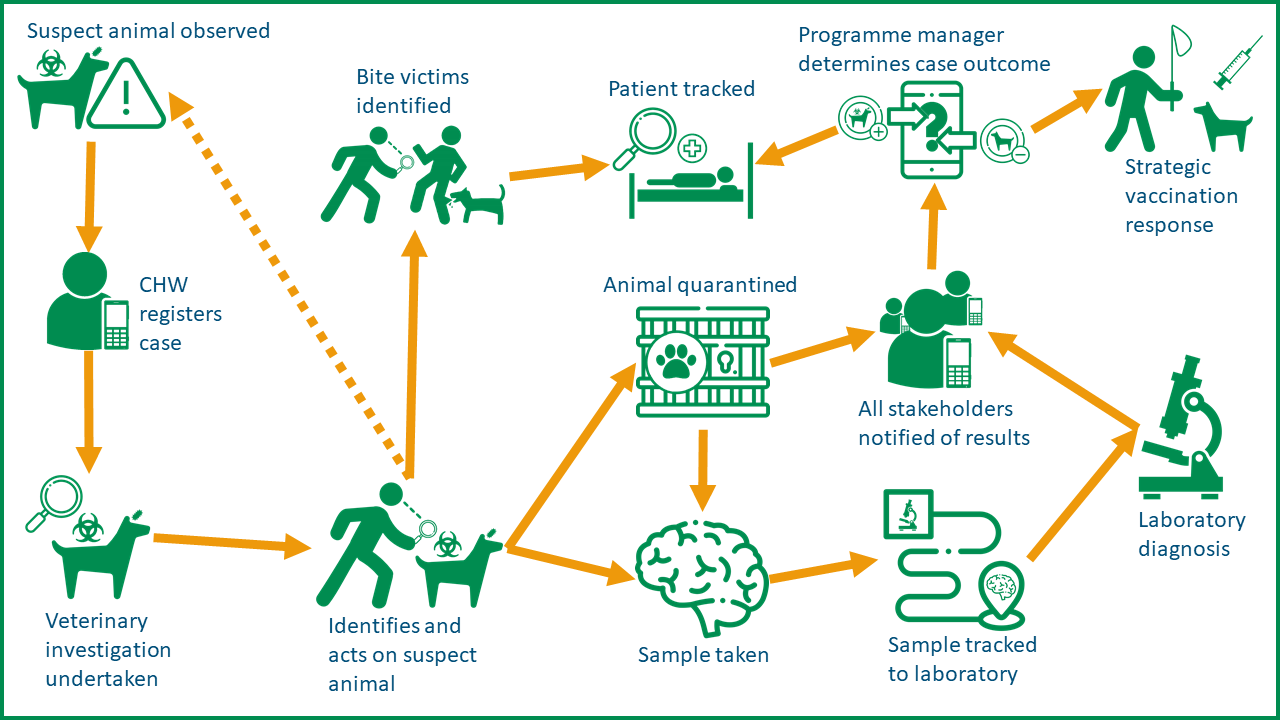Community-Based Rabies Surveillance
Used by: Health facilities, animal health professionals, Community Health Workers (CHWs).
What is the CBRS?
The Community-Based Rabies Surveillance (CBRS) tool is a comprehensive integrated bite-case management system that is capable of tracking bite victims, linking those victims with the suspect animal, and tracking the suspect animal throughout the investigation process. The CBRS uses the Rabies Treatment Tracker tool as the human component and adds additional functionalities for a truly integrated bite case management tool.
In summary, the CBRS incorporates human and animal health and links it with laboratory investigation and animal quarantine, uniting all sectors into a single active rabies surveillance system, complete with automated messages and notifications.
Why should I use the CBRS?
The CBRS:
- Is a comprehensive integrated bite case management system.
- Is built around community surveillance.
- Is a truly One Health system, uniting animal and human health data.
It will help you to:
- Directly link human rabies exposures to the suspect animal.
- Implement active rabies surveillance.
- Rapidly identify and respond to rabies cases.
- Improve intersectoral collaboration at the community-level.
What data does the CBRS capture?
- All bite patient data and tracking (WHO wound categories; PEP administration, etc.).
- Suspect animal information (location, owner details, vaccination history, etc.).
- Veterinary investigation (signs of rabies, other exposed people, and animals, etc.).
- Quarantine tracking.
- Laboratory sample and diagnosis information (diagnostic result, test, etc.).
- Final case outcome in line with the OIE reporting criteria.
What are the outputs from the CBRS?
- Rapid identification of new suspect rabies cases (both human and animal cases).
- Ensuring exposed individuals receive adequate PEP.
- Ensuring that more cases are detected and reported.
- Improving suspect sample submission (including roadkill).
- Facilitating timely investigations and rapid follow-up.
- Can result in reduced PEP usage.
- Ensuring data quality and enabling identification of breaks in the communication chain.
See a diagrammatic overview of the CBRS components and how they interlink.

